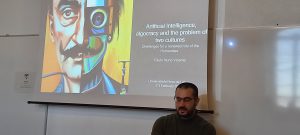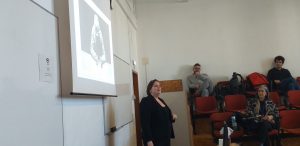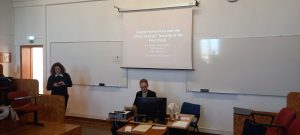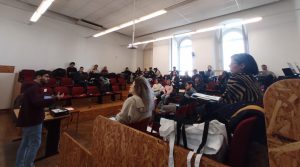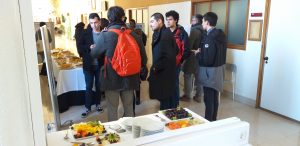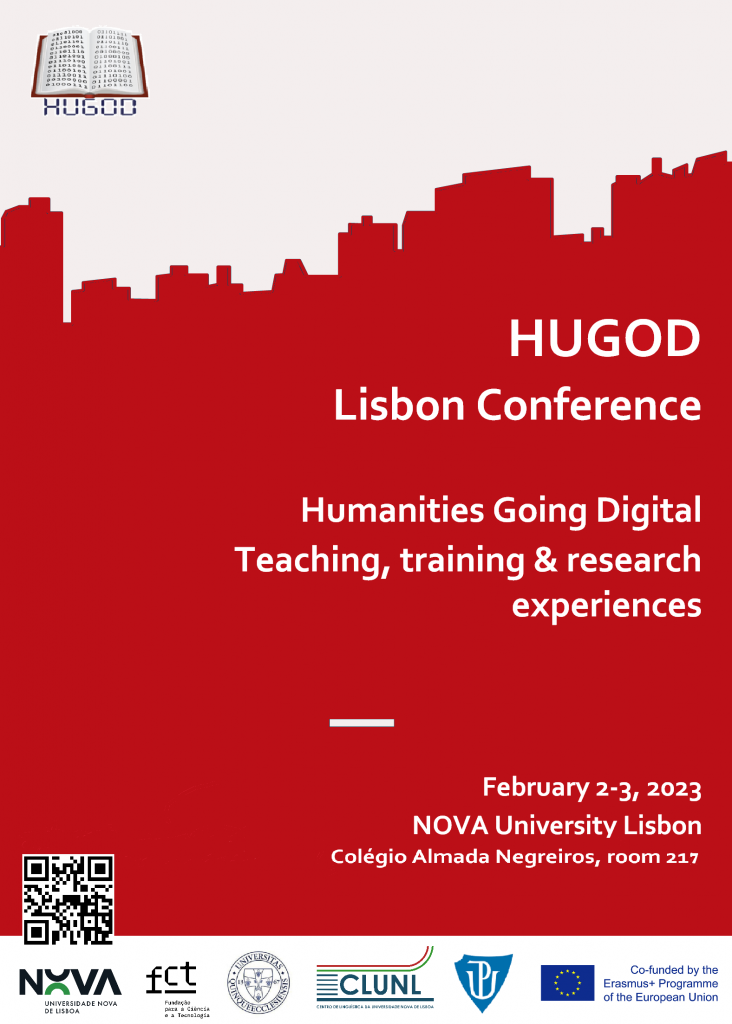ORAL COMMUNICATIONS
Ana Salgado, Laurent Romary, Rute Costa, Toma Tasovac, Anas Fahad Khan, Margarida Ramos, Bruno Almeida, Sara Carvalho, Mohamed Khemakhem, Raquel Silva, “Morais dictionary: following best practices in a retrodigitised dictionary project”, Lisbon Sciences Academy, Portugal & INRIA, France & NOVA University Lisbon, Portugal & Belgrade Center for Digital Humanities, Serbia & Institute for Computational Linguistics CNR, Italy & University of Aveiro, Portugal & ArcaScience, France
Anna Vacalopoulou, Nikolaos Sidiropoulos, Christina Flouda, Athanasios Doupas, Voula Giouli, Panagiotis Karioris, Paraskevi Botini, Giorgos Giannopoulos, Nikos Bikakis, Gregory Stainhaouer, “In view of reusable representation of cultural content: the case of a multilingual and multimodal corpus in the Greek context”, Athena Research Center, Greece
Caitlin Burge, “Mapping the archives: epistolary networks and the state papers of England”, University of Luxembourg, Luxembourg
Daniel Alves, Joana Vieira Paulino, “The Programming Historian in Portuguese: a step forward towards digital literacy in the Social Sciences and Humanities”, NOVA University Lisbon, Portugal
Daniel Melo, “Digital Humanities and book heritage”, NOVA University Lisbon, Portugal
Diogo Marques, Ana Gago, “MOIRA: (Re)creating heritage through digital literature”, University of Oporto, Portugal
Ignacio Bugueno Cordova, Luis Garcia Lara, “Generation of new visual symbolic artistic expressions, through the intelligent reinterpretation of Selknam people native songs”, IEEE & Catholic University of Temuco, Chile
John Schaefer, “Discovering Australian flora: JSTOR’s juncture as an interdisciplinary K-12 pedagogical tool”, University of Cambridge, United Kingdom
Karel Čapka, Johana Lukovská, Klára Venglařová, “Covid, face masks, vaccination or lockdown? Answers found in Quantitative Linguistic analysis of Czech Ministry’s of Health communication”, Palacký University Olomouc, Czech Republic
Luís Trigo, Carlos Silva, Vera Moitinho, “Learning Phonology with data in the classroom: engaging students in the creolistic research process”, University of Oporto, Portugal
Maarten Janssen, Silvie Cinková, “Teaching data analysis for DH in practice: TEITOK and the TEITOK API”, Charles University, Czech Republic
Maria João Ferro, Ana Raquel Fernandes, Andrea Szőnyi, Catarina Xavier, Cláudia Martins, Gabriella Komoly, Mónika Mezei, Zsófia Gombár, “Digital Humanities at the service of remembrance: The creation of digital archive-based activities within the project “Remembering the Past, Learning for the Future”, Lisbon Polytechnic Institute, Portugal
Mate Deak, “Filling the gap between educators and students – the MaxWhere’s solutions in education”, University of Pécs, Hungary
Qiaoyu Li, Maria Helena Araújo e Sá, “Knowledge mapping of collaborative online international learning (coil): a visual analysis using Citespace”, Macao Polytechnic University, China & University of Aveiro, Portugal
Ricardo Cruz, “Students’ perceptions of the effectiveness of reading comprehension skills on a digital environment – an exploratory study with Portuguese high school students”, Open University, Portugal
Tibor Vocásek, “Imaginaries going digital: a critical review on the concept analysing (with) digital technologies”, Charles University, Czech Republic
Vera Moitinho de Almeida, “Digital imaging, computational methods, and Pottery Studies”, University of Oporto, Portugal
POSTERS
Amrin Kothia, “Digital Humanities: a revolution in the field of religious education?”, University College London, United Kingdom
Andrea Schmidt, “Transformation in “Teaching about Transformation” – new perspectives in curriculum development”, University of Pécs, Hungary
Kıvanç Gördü, Martina Benešová, ““Linguistics from the Living Room” as a new way of education”, Palacký University Olomouc, Czech Republic
Lukáš Zámečník, “Is there a theoretical foundation for Digital Humanities?”, Palacký University Olomouc, Czech Republic
Rosana Durão, Teresa Maló Sequeira, Carla Dionísio Gonçalves, Maria Isabel Orega, “Audiobooks as digital resources in educational environments: a study on teacher’s perceptions”, University of Algarve, Portugal
Santiago Pérez Isasi, Esther Gimeno Ugalde, “Project IStReS – Iberian Studies Reference Site as a tool for designing a programme on Iberian Studies”, University of Lisbon, Portugal & University of Vienna, Austria
Vörös Zoltán, “Case study introduction – security and peace in an uncertain world course”, University of Pécs, Hungary
- You can download the full list here.
